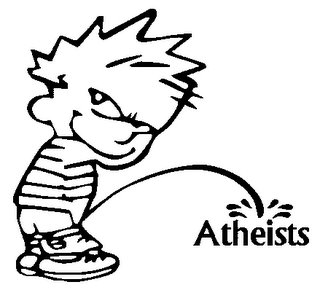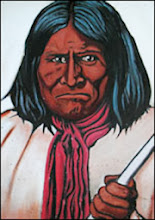 Various forms of government have sprang about throughout the world over the centuries as a means of bringing greater order among large communities of people. True anarchy only exists in remote primitive communities where at most a tribal chieftan and/or group of elders typically serve as advisors and mediators in time of conflict.
Various forms of government have sprang about throughout the world over the centuries as a means of bringing greater order among large communities of people. True anarchy only exists in remote primitive communities where at most a tribal chieftan and/or group of elders typically serve as advisors and mediators in time of conflict.Centuries ago the large indigenous civiliations of the Americas, namely the Olmec, Toltec, Aztec, Maya, and Inca nations, including the Iroquois Confederation, exercised forms of government resembling those classical governments of Europe, the Middle East, and Asia. The Aztecs, Mayans, and Incas even had some emperors that implemented collectivist societies that resemble those that were born out of Marxist philosophy.
However, most traditional Indigenous American societies have always exercised a form of laissez-faire social order in which leadership is entrusted by the community to certain individuals to maintain order and to exercise justice. Or, as the 19th century Ojibwa chief George Copyway pointed out:
"Among the Indians there have been no written laws. Customs handed down from generation to generation have been the only laws to guide them. Everyone might act different from what was considered right did he choose to do so, but such acts would bring upon him the censure of the Nation...This fear of the Nation's censure acted as a mighty band, binding all in one social, honorable compact."
As societies become more organized and complex, the more government they require to provide essential goods and services that individuals and sub-groups within a society are unable to provide at either a reasonable cost, as efficiently, or not at all. In modern terminology, "individuals" and "sub-groups" means the private sector.
Some non-Indigenous American people who adhere to the various socialisms that were born out of Marxist philosophy believe that most Indigenous American tribes and nations have always practiced a form of primitive socialism. However, what they fail to distinguish is essentially the difference between indigenous voluntary communitarianism verses coercive Euro-centric-rooted collectivism, redistribution of income, and fairness and equality by force.
Indigenous Americans have always recognized outright individual ownership of certain personal posessions. Although traditional Indgenous American tribes and nations of old never recognized the concept of land ownership with written contracts and titles, they did recognize and exercise domain over territory, and individuals and families within those tribes and nations exercised domain over plots of land for living on and growing food. This has always been particularly true of non-nomadic tribes; i.e., those that did not move from one territory to the other season-to-season.
Today, many "tribal governments" have become rife with inefficieny, hypocrisy, corruption, and abuse of authority just like most major political parties that run non-Indian governments throughout the Americas have. Some tribal governments even describe their type of government as being "socialist," even though tribal members are actually allowed to keep what they earn and attain without having to redistribute some of it to other tribal members or to the tribal government against their will. "Indian socialism" is thus, in most cases, just voluntary sharing and communitarianism as already described. Distribution of wealth on reservations within the United States and Canada in particular is basically limited to equal allocation of gaming profits to each person who is an enrolled member of a reservation with a casino. Prior to reservation gaming and on reservations without gaming, "soicalism" consists of equal allocations of federal subsidies from the dominant non-Indian government.
Contrary to what Mexico's socialist Subcomandante Marcos (who was born of Spanish immigrant parents) and the National Zapatista Liberation Army (EZLN) say and propose, the exercise of capitalism by individuals and tribal governments is not taboo among most Indigenous American traditionalists, being that most traditional Indigenous American societies have always exercised forms of free trade and individual profit.
Indigenous Americans have no moral or emotional obligation to be patriotic towards yori (non-Indigenous American) governments run by politicians and bureaucrats from political parties that only allow indigenous communities and reservations a certain amount of autonomy as opposed to the option of true sovereignty and independence. Government-wise, an Indigenous American traditionalist's first allegiance is to the indigenous tribes or nations he or she is a descendant of if they are not tyrannical, followed by the other indigenous nations of the Americas that his or her own nations are at peace and harmony with. The individual option of calculated acts of civil disobediance and defensive measures is in order in relation to those laws and policies of yori governments that conflict with or intrude upon peaceful and harmless Indigenous American ways and traditions.
Taking part in the political and electoral process of yori governments is appropriate by supporting and voting for only those candidates who have passed the test of being in favor of true Indigenous American sovereignty, low taxes, and non-intrusive limited government, even if they are a member of a political party that is not likely to win, or a non-partisian who is not likely to win. Supporting and voting for the lesser-of-two evils is a compromise of traditional Indigenous American principles, because one ought not to support any kind of evil period, however great or small. Support of yori government legislation and ballot initiatives that are in harmony with traditional Indigenous American values is also in order.
The following traditional Indigenous American teachings are great traditional Indigenous American values when it comes to the subjects of government, individual liberty, and Indigenous American sovereignty:
"The earth is the mother of all people, and all people should have equal rights upon it. You might as well expect the rivers to run backward as that any man who was born a free man should be contented when penned up and denied liberty to go where he pleases. -- Hinmaton Yalatkit. More commonly known as Chief Joseph of the Nez Percé. (1830-1904).






